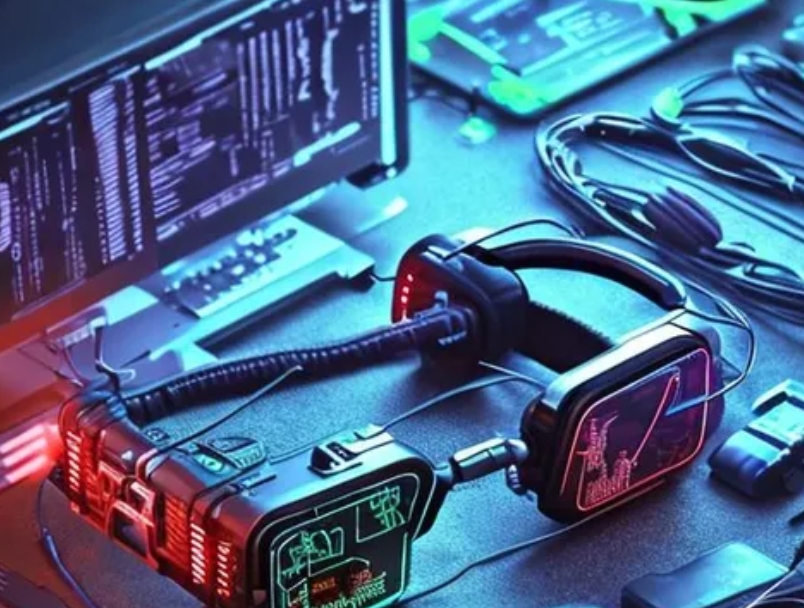
Augmented Reality (AR) is poised to revolutionize the way we interact with the world around us. As the technology matures, we're seeing a surge of innovative gadgets that promise to seamlessly blend digital information with our physical environment. Here's a look at the future of AR gadgets and their potential impact on various aspects of our lives.
AR Smart Glasses
The next big leap in AR technology is expected to come in the form of sleek, everyday-wearable smart glasses.
Key Features: - Transparent displays - Spatial audio - Advanced sensors for environment mapping - Natural gesture controls
Potential Applications: 1. Navigation with real-time directions overlaid on your view 2. Instant language translation of text and speech 3. Virtual workspaces for enhanced productivity 4. Immersive gaming experiences in real-world environments
Examples in Development: - Apple's rumored AR glasses - Google's Project Iris - Meta's Project Nazare
AR Contact Lenses
Even more futuristic are AR-enabled contact lenses, which could provide an even more seamless AR experience.
Potential Features: - Micro LED displays - Wireless power and data transmission - Eye-tracking sensors - Health monitoring capabilities
Challenges: - Miniaturization of components - Power management - Ensuring eye health and safety
Companies Working on This: - Mojo Vision - Samsung (patent filings)
AR-Enhanced Vehicles
The automotive industry is embracing AR to improve safety and enhance the driving experience.
Features: - Heads-up displays (HUDs) with navigation and safety information - AR windshields highlighting road hazards - Virtual side mirrors with enhanced views
Benefits: - Reduced driver distraction - Improved situational awareness - Enhanced parking assistance
Examples: - Audi's Q4 e-tron with AR HUD - Mercedes-Benz MBUX Augmented Reality Navigation
AR in Healthcare
Medical professionals are leveraging AR for improved patient care and medical training.
Applications: - Surgical planning and guidance - Vein visualization for easier IV placement - Interactive anatomy lessons for medical students
Devices in Development: - AR headsets for surgeons - AR-enabled medical imaging systems
AR for Industrial Use
Manufacturing and maintenance sectors are adopting AR for increased efficiency and safety.
Use Cases: - Assembly line guidance - Remote expert assistance - Equipment maintenance and repair instructions
Examples: - Microsoft HoloLens in industrial settings - RealWear Navigator 500 for hands-free industrial AR
Consumer AR Devices
Beyond smart glasses, other consumer AR devices are emerging:
AR Mirrors:
- Virtual try-on for clothing and makeup
- Fitness coaching and posture correction
AR Home Decor Tools:
- Visualize furniture and color schemes in your space
- IKEA Place app as a current example
AR Kitchen Appliances:
- Recipes and cooking instructions overlaid on work surfaces
- Nutritional information displayed on food items
The Future of AR Interfaces
As AR technology evolves, we can expect to see:
- Brain-Computer Interfaces (BCIs) for intuitive AR control
- Haptic feedback systems for tactile AR experiences
- AI-driven personalization of AR content
- Improved object recognition and real-time 3D mapping
Challenges to Overcome
For AR to reach its full potential, several hurdles need to be addressed:
- Battery life and power efficiency
- Data privacy and security concerns
- Social acceptance and etiquette
- Reducing motion sickness and eye strain
- Creating compelling and useful AR content
The Impact of 5G and Edge Computing
The rollout of 5G networks and advancements in edge computing will significantly boost AR capabilities:
- Faster data transmission for real-time AR experiences
- Reduced latency for more responsive interactions
- Improved cloud-based processing for more powerful AR applications
Ethical Considerations
As AR becomes more prevalent, society will need to grapple with:
- Information overload and digital distraction
- The digital divide between AR users and non-users
- Privacy concerns in an AR-saturated world
- Potential for AR addiction and escapism
The future of AR gadgets is bright and full of potential. As these devices become more sophisticated and ubiquitous, they have the power to transform how we work, learn, play, and interact with the world around us. While challenges remain, the ongoing advancements in AR technology promise to usher in a new era of human-computer interaction, blending the digital and physical worlds in ways we're only beginning to imagine.
american-boffin.com
bfbchamp.com
democraticcoma.com
tigrepelvar.com
charpoles.com
derbywheelblazers.com
fansfocus.net
guildnow.com
hediyeteyze.com
isprimecdn.com
kiira-korpi.net
manutd24.com
mediumtylerhenry.com
mishanghai.org
savethreestrikes.com
smilesbydavis.com
10puntos.net
band-shirt.com
icelandtrails.com
paulmarioday.com
thefunnynanny.com
Dave Tries Ballet
Buon Grande
Criacao Sites
Perry Perkins Books
Writing Essay in AU
Ka Soku
Blood is Blood Movie
Eleanor Writes Things
The Happy Prince Beirut
Town of Witless Bay
Online Igrovoi Club
Trigeminal Neuralgia - Ronald Brisman MD
Chocolate City Burlesque
Advanced Electric Scooters
W Tougei
Breadboard Maniac
Takasu App



